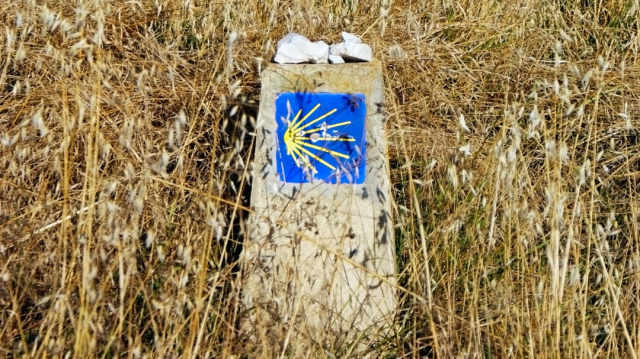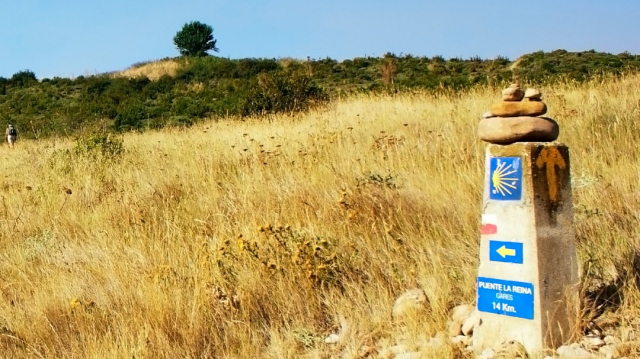Leaving stones and crosses on the Camino de Santiago: the meaning behind this tradition
The traditions of the Camino de Santiago are many, and this one stands out for its solidarity with the rest of the pilgrims
The yellow arrow with a pile of stones next to it is one of the most common images along the way, whatever route is followed. However, it hides a meaning that not everyone knows. Among all the traditions and legends related to the Camino de Santiago, this is one of the oldest. This tradition has no known origin, but goes back centuries.
The story of the stones of the path
The stones along the route to Santiago were initially placed with the intention of guiding other pilgrims. In this way, other travelers were informed of the path to follow, before there was standardized signage. The stones in each section are a silent way of creating community, in which the pilgrims do not meet each other but are aware that they follow the legacy of others before them.
These stones have another reason for being, more spiritual. Leaving a stone along the way is a symbol that the pilgrim leaves behind his fears and mistakes. It symbolizes that you get rid of a burden, that you abandon the pain and regret that you have carried during the previous kilometers.
Whether to release sorrows or to feel in community with other pilgrims, this gesture has spread to all parts of the world. Each of the stones on the path are, in a spiritual way, the loads that thousands of pilgrims have carried before you, and that they have been able to leave behind to complete the path to the Cathedral of Santiago.
What do the crosses mean
The crosses have a slightly different meaning, they are not a mark for the rest of the pilgrims. Although its origin is not known, apparently it began to be made as a way to honor the death of a loved one. There are those who continue to do it today to show respect and memory of their loved ones, since this symbol has survived over the centuries.
Routes
Blog
 How to get to Sarria to do the Camino de Santiago
How to get to Sarria to do the Camino de Santiago
 Descubre la magia del Camino de Santiago Portugués por la costa
Descubre la magia del Camino de Santiago Portugués por la costa
 5 tours culturales que puedes hacer en Galicia si decides hacer un alto en el camino
5 tours culturales que puedes hacer en Galicia si decides hacer un alto en el camino
 Doing the Camino de Santiago in June: What you should know?
Doing the Camino de Santiago in June: What you should know?
Information
Points of interest
Cities & Towns | Hostels | Lodgings | Restaurants | Saddlery | Doctors | Points of interest | Bikes workshop
Contact us | Privacy policy | Cookies policy | | Terms of use | Authorship | Web Map | Consentimiento
© Copyright LA VOZ DE GALICIA S.A. Polígono de Sabón, Arteixo, A CORUÑA (ESPAÑA) Inscrita en el Registro Mercantil de A Coruña en el Tomo 2438 del Archivo, Sección General, a los folios 91 y siguientes, hoja C-2141. CIF: A-15000649
Developed and managed byHyliacom

